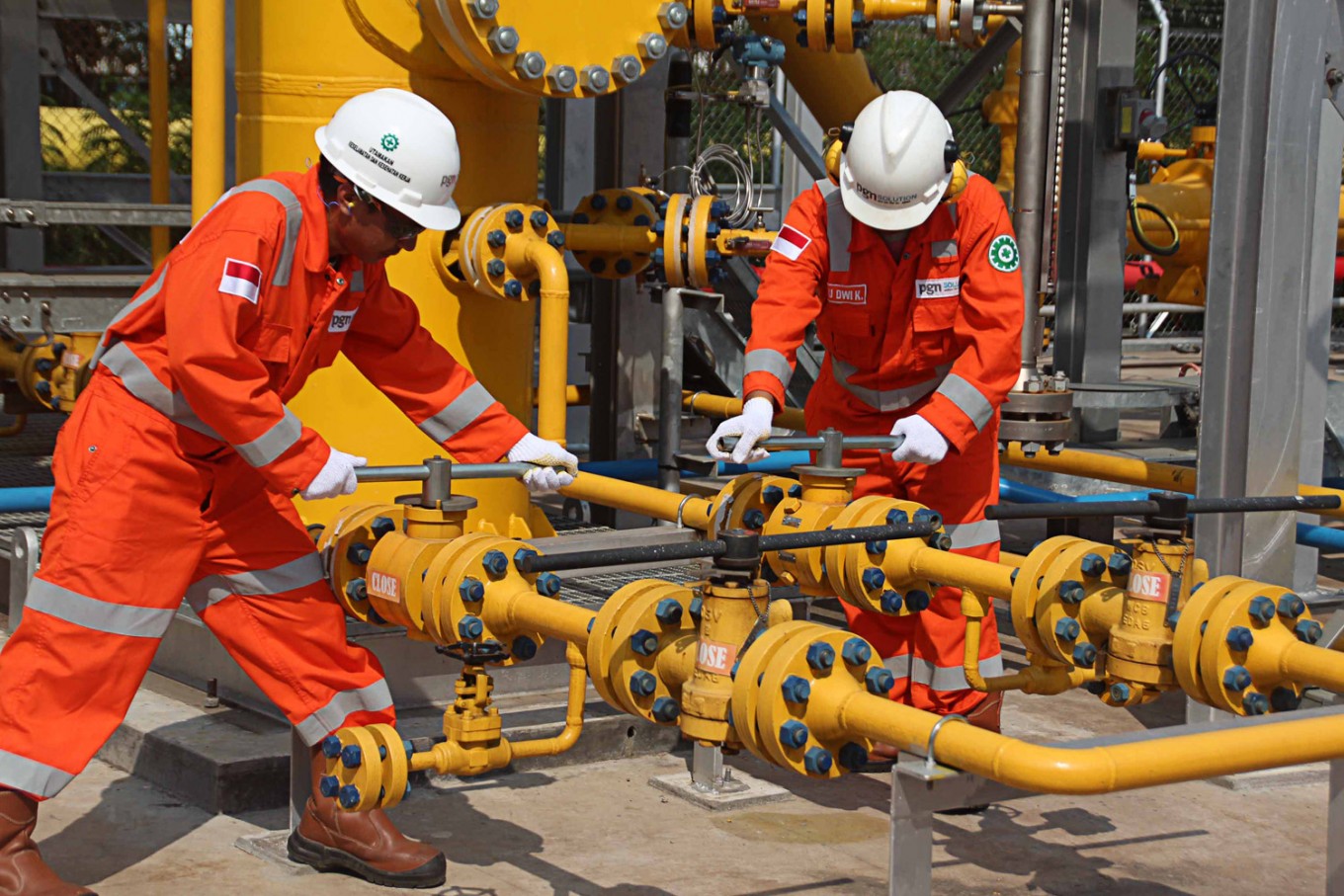PGN to develop three domestic LNG hubs for power plant gasification plan
State-owned gas firm PGN is spending heavily to speed up the transition to liquefied natural gas (LNG) for power generation.
Change Size
 Workers of state-owned gas company PT PGN check pipelines for gas channeled to power generator PT Indonesia Power at a gas meter station in Tambak Lorok, Semarang, Central Java, in this undated photo. (JP/Suherdjoko)
Workers of state-owned gas company PT PGN check pipelines for gas channeled to power generator PT Indonesia Power at a gas meter station in Tambak Lorok, Semarang, Central Java, in this undated photo. (JP/Suherdjoko)
S
tate-owned gas firm PT Perusahaan Gas Negara (PGN) plans to convert three liquefied natural gas (LNG) terminals into regional gas distribution hubs as part of a government program to cut oil imports.
PGN, which expects to spend US$2.5 billion to execute the program, plans to focus the funding on developing its LNG terminal in Arun, Aceh, developing its floating storage regasification unit (FSRU) in Lampung, Sumatra, and building a third terminal in Ambon, the capital of Maluku.
It will use the three terminals to channel fuel for 52 compressed natural gas (CNG)-fired power plants in western, central and eastern Indonesia.
Read also: PGN to spend $2.5 billion to support PLN’s gasification program
The power plants, owned by state-owned electricity giant PLN, can run on both gas and diesel fuel but have been using more of the latter for logistical convenience.
PGN president director Suko Hartono said in a statement on Monday that the program was expected to “improve the primary energy mix for PLN plants and reduce greenhouse gas emissions.”
Gas-fired power plants emit less greenhouse gases than coal or diesel plants, but their environmental credentials are still a far cry from plants harnessing wind, solar or geothermal power or another source of renewable energy.
“The terminals will respectively serve western, central and eastern Indonesia. The development plan includes acquiring pipelines, ships, trucks and supporting facilities,” PGN said in the statement.
Gasifying power plants are one of many government programs launched to slash oil imports, which has been a leading contributor to the country’s trade deficit in the past, a key vulnerability for Southeast Asia’s largest economy.
PGN and PLN plan to gasify three of the 52 plants this year, namely those on Nias Island (North Sumatra), Tanjung Selor (North Kalimantan) and Sorong (West Papua).
The three plants – described by both companies as “quick wins” – had been chosen because they were most ready in terms of infrastructure, operational capacity and local demand, said PLN primary energy director Rudy Hendra Prastowo.
“The remainder of the 52 plants are, to be frank, spread out and isolated. We will have to assess their feasibility,” he told The Jakarta Post on Tuesday.
“In this stage, we aim to provide gas at a lower price than high-speed diesel,” said PGN business development director Syahrial Mukhtar.
The two state-owned enterprises have until January 2022 to complete the gasification program, according to Energy and Mineral Resources Ministry Decree No. 13/2020.
With the program, the electricity company expects to cut diesel consumption by 1 million kiloliters and save Rp 4 trillion ($277 million) in fuel spending.
Read also: PLN to use LNG in 52 power plants to help reduce oil imports









